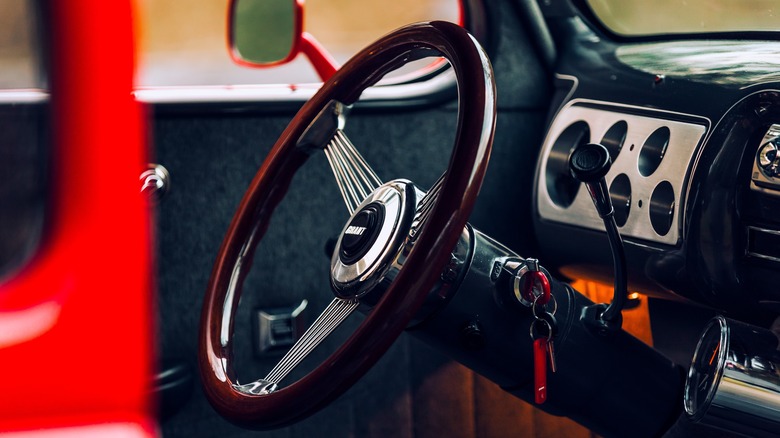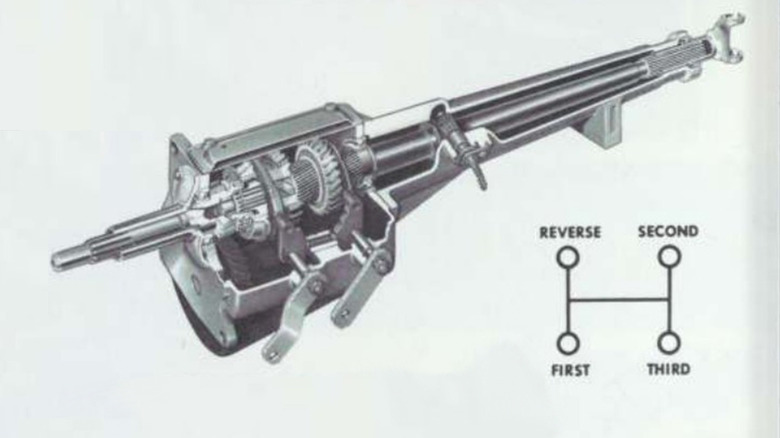3 On The Tree Explained: How Does It Work?
Modern manual transmissions, at least what's left of manuals, are typically five-speed or six-speed setups. However, decades ago, there was a time when manual transmissions were made in four-speed and even three-speed configurations. Most of the time, the gear shift was either on the floor, or mounted in the console between the front seats in more low-slung sporty cars. However, three-speed transmissions occasionally placed the shift lever on the steering column, leading to the name "three on the tree."
Although the design may look a little odd to 21st century automotive sensibilities, it really wasn't a very unusual setup for cars of decades past. Much like the floorboard placement of the high-beam switch in older cars, a "three on the tree" configuration was the norm for many years.
Three-speed manual shifter on the steering column was in regular use among American cars from the 1940s until the late-1970s. In use, it works a lot like a regular manual transmission: the actual transmission is still where it should be, the means of selecting gears is just closer to your hand when it is on the wheel.
No more awkward floor-mounted shift levers
The actual shifting pattern of a three-speed transmission is in an "H" shape, and the neutral gear is in the middle. It may vary depending on the car, but generally, the reverse gear requires you to pull the lever towards you and to push up. For first gear, simply push down from the reverse position. For second gear, return the shift lever to the neutral spot, push the lever away from you, and push it up. Third gear is just straight down from second gear.
Economy cars and base trim trucks and vans had this setup as standard for decades. As with anything, it requires practice if you find yourself behind the wheel of a three-on-the-tree, but beyond that, it's simply just a different way of moving the gears to where they are supposed to be.
Advertising from Ford for the first generation of the Ford Falcon in 1961 claimed that the column mounted shifter saved space and were easy to use, asserting that other floor-mounted transmission levers were awkward. While enthusiasts will likely always pine for a manual transmission, perhaps only the diehard nostalgic gearheads will prefer a column mounted shifter.

